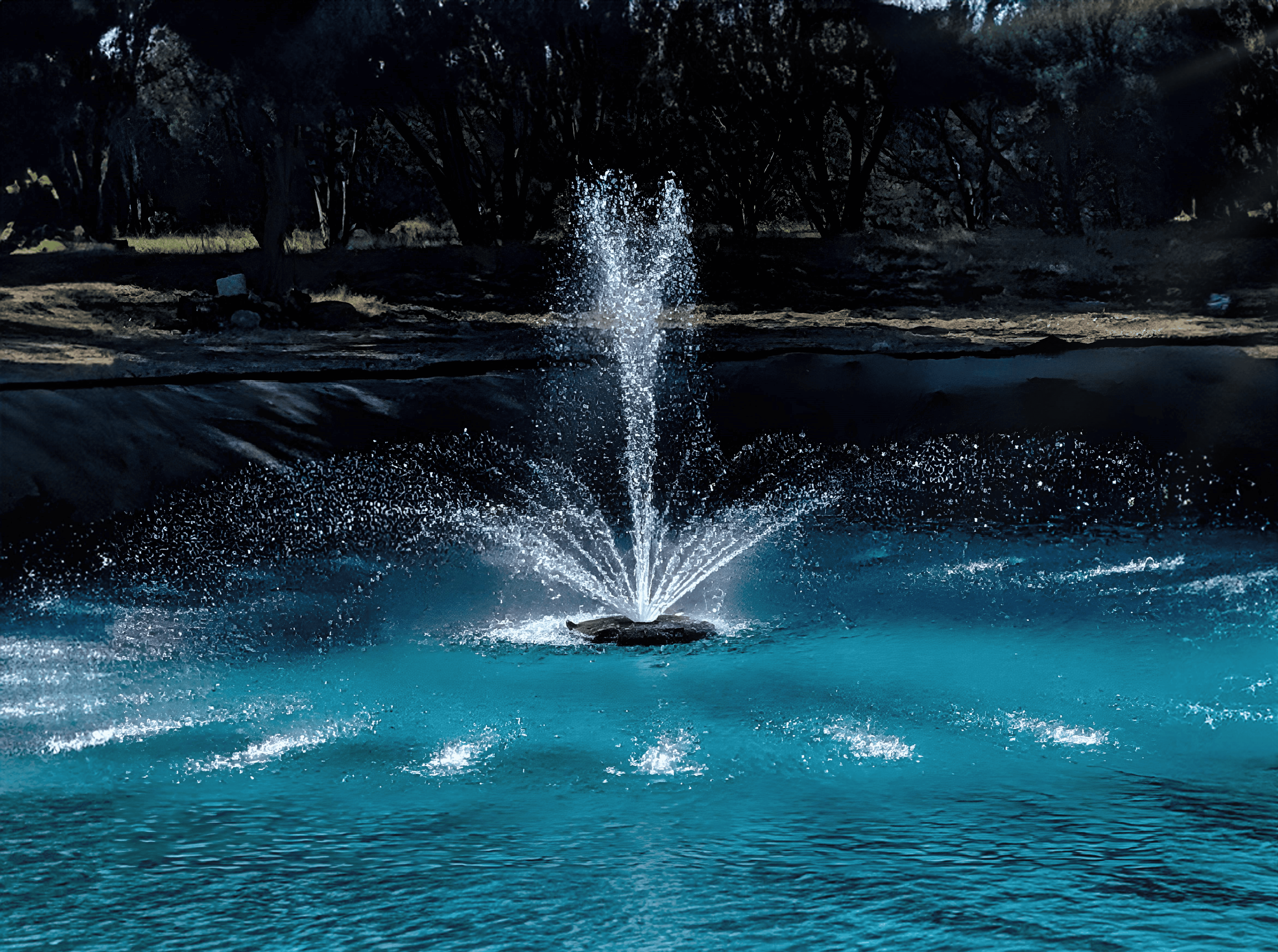There is a significant difference between pond aerators and floating pond fountain pumps. Most pond fountains are designed with a pump, an energy-saving asynchronous pump, or usually a high-volume waterfall pump. When it comes to floating fountains, it works by the pump, which is connected to a float, forcing the water through a decorative nozzle to give a pretty display. Floating fountain pumps will provide higher and more decorative displays than aerating fountain displays. This is because decorative floating pond fountains use nozzles to create their intricate display patterns. They can also reach great display heights. These pumps can also aerate your ponds and lakes by interrupting stagnation, adding oxygen, and recording the growth of algae. But aerating floating fountains use propellers instead of pump impellers and no nozzle is used, thus having higher pumping volume and thus more aeration.
Though many people use the terms fountain pumps and aerators interchangeably, these two pieces of equipment are very different. Floating fountain pumps are designed to enhance the look of the pond and add minimal or moderate aerating by pushing water up to 15-30 feet into the air, sometimes higher, depending on the spray pattern and model. Floating fountains are the focal point in most ponds. Though the fountain pumps a lot of water and increases oxygen levels on the surface, aerating floating fountains further increase aeration and oxygen levels by moving higher volumes of water. This helps in effectively aerating the pond or lake by moving as much water as possible and also refreshing stagnant water. Pond aerators also impress the landscape or waterscape not only with its visual appearance but also with the tranquil sound of water. It can carry out these functions in an efficient manner but aerating fountains are limited in height and have only one shape, the “V” display pattern.
Decorative aerators use heavy-duty stainless steel motors that rotate a high-quality propeller. Water does not enter the motor, and the propeller throws an extremely high volume of water into the air.
For deeper ponds of over 7 feet of average depth, proper aeration requires use of a sub-surface aerator. These improve the health of fish and introduce as much oxygen as possible. A sub-surface aerator does not have a float or any electrical cord in the water. Instead, an air compressor is housed at the shoreline which pumps air through tubing that goes to the bottom of the pond and is connected to diffuser(s), which send(s) air bubbles from the bottom of the pond to the surface. The air compressors do not normally need to be very big to pump high volumes of air through the tubing.
In simple words, any kind of aerator adds oxygen and induces circulation into the pond or lake for water quality management purposes. Aerating fountains provide more aeration than decorative fountains, but if your pond is greater than 7’ of average depth, a sub-surface aerator is highly recommended. Al three kind of aerators fight against unwanted algae, improve water health for plants and fishes, and reduce smells and odors.
Bottom Line
We can conclude that decorative floating fountain pumps put aesthetics first and also come in a wide range of designs, while floating aerating fountains provide a nice “V” shaped display but aerate more than decorative units. Sub-surface aerators focus on deep aeration of the pond, making sure that oxygen reaches the maximum depth possible.


